What's New
Displaying results 3901 - 3910 of 4052
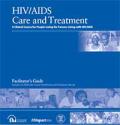
Resource | Publications,
Only about five percent of the 30 million people in poor countries who need treatment for HIV infection are receiving it. As the need for treatment grows, so does the demand. The June 2001 Declaration of Commitment by the United Nations General Assembly states that "Prevention, care, support and treatment for those infected and affected by HIV/AIDS are mutually reinforcing elements of an effective response and must be integrated in a comprehensive approach to combat the epidemic." Encouraged by global support for expanding access to treatment and by a decrease in the price of antiretroviral drugs, programs are increasingly seeking ways to add a treatment component to their prevention, care, and support services.
This facilitator's guide presents new knowledge and skills for delivering and organizing clinical care and treatment services for people living with HIV/AIDS. It is shaped by FHI's longstanding work in HIV-related prevention, care and support activities in more than 60 countries. Recently, FHI began supporting public and NGO efforts to deliver strengthened HIV care and support, including antiretroviral treatment (ART), in three countries at the district level.
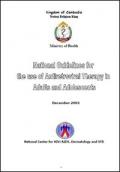
Resource | Tools,
Despite the stabilization of HIV prevalence in Cambodia over recent years there has been a dramatic increase in the number of people living with HIV/AIDS who are ill and in need of health care. This reflects the progression of HIV disease in those infected in the past, particularly the large numbers of people infected during the mid-1990s. It is estimated that the peak incidence of illness and death from HIV/AIDS in Cambodia will occur over the next few years. Each year approximately 20 000 people will develop AIDS and die unless expanded interventions are available.
This document is designed as a component in the response that is necessary to address the pressing care needs of person/people living with HIV/AIDS (PHA) in Cambodia. It is written primarily for health care workers who are involved in the care of adults and adolescents (>12 years of age) living with HIV/AIDS. It aims to provide a clear explanation of the basics of ARV therapy. It should be used as an introduction and a reference and should not substitute for comprehensive training in the use of ARV. Similarly it does not seek to address the complex operational requirements of comprehensive HIV care in general, nor of ARV provision in particular.
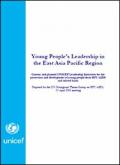
Resource | Publications,
As the leading UN children and young people's development agency, UNICEF has a number of ongoing strategic programme, advocacy and partnership initiatives designed to strengthen and expand leadership for and by children and young people. HIV/AIDS prevention and care is now one of 5 UNICEF global priorities, in addition to girls’ education, integrated early childhood development, immunisation "plus", and improved protection of children from violence, exploitation, abuse and discrimination. This means that 4 out of 5 UNICEF global organisational priorities are focused on the health and well being of children and young people, and directly working to reduce vulnerability to HIV/AIDS. The MTSP and the UNICEF mission statement and vision are all about facilitating leadership at all levels of society, the family, community, political, religious and economic leaders, including children and young people. UNICEF is integrating HIV/AIDS prevention and care across this dynamic leadership agenda.
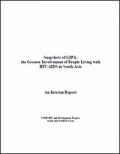
Resource | Publications,
The UNDP supported Project for Greater Involvement of People Living with HIV/AIDS (GIPA), led by Sahara an NGO based in Delhi, is addressing these issues. Through a participatory process an initial stocktaking/situation analysis of the experience of people living with HIV/AIDS was undertaken which provided baseline information for the GIPA Project. Subsequently people living with HIV and AIDS (PLWHA), their groups, organisations and networks have identified capacity building needs and developed strategies and proposals aimed to create a more supportive environment by raising awareness of the situation of PLWHA among the general public and establishing new PLWHA support groups. The intended outcome is more and stronger PLWHA groups capable of impacting the decision making on responses to the HIV epidemic.
The GIPA initiative works to give space for those closest to the epidemic, listen to their voices and include them in the solutions of the enormous challenges posed by HIV/AIDS in South Asia.
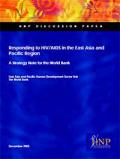
Resource | Publications,
With almost half the world’s population, Asia will determine the future of the global HIV/AIDS
pandemic. If prevalence rates in China, Indonesia, and India increase to numbers similar to those seen in Thailand and Cambodia, the rate of HIV/AIDS would double globally. Such growth would be
devastating for individuals—and for the region’s health systems, economies, and social fabric. HIV/AIDS is therefore a multisectoral development challenge and, consequently, a corporate priority for the World Bank.
This paper outlines a strategic direction for the World Bank in its multisectoral response to HIV/AIDS in the East Asian and Pacific region. It describes the risk of a large-scale HIV/AIDS epidemic in the region. It also spells out what can be done to avert the growth of HIV—and what government, civil society, and other partners are doing. And it identifies how the World Bank can assist at the country and regional levels. The World Bank will work with countries, civil society, the private sector, donors, and other key players to formulate country-specific strategies that try to respond to the needs of the population.
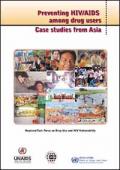
Resource | Publications,
In 1997 the Task Force on Drug Use and HIV Vulnerability commenced its operation in Bangkok. It immediately identified the lack of information concerning HIV/AIDS among drug users in the Asia region across three broad thematic areas: insufficient epidemiological data; limited knowledge within the region on policies related to drug use and HIV/AIDS; and, inadequate documentation and dissemination of good interventions. Subsequent to these observations, UN organisations and their partners have undertaken much work in order to fill this vacuum. The Asian Harm Reduction Network, along with other partners, has published two editions of the “Hidden Epidemic”, that provides details on the status of the HIV/AIDS epidemics among drug users in the countries of the region. In October 2000, the Task Force itself published the report “Drug Use and HIV Vulnerability: Policy Research Study in Asia”. These two publications have concisely addressed the issues of epidemiology and policy.
This current publication “Preventing HIV/AIDS Among Drug Users: Case Studies from Asia”, addresses
the third important area, the dissemination of good practices on HIV/AIDS prevention and care interventions among drug users. Emphasis is laid on addressing the practical aspects of how to do it. Each of the studies has been arranged in a format to promote the reader’s further consideration of the issues such that they might be replicated and adapted to their own particular context and needs.
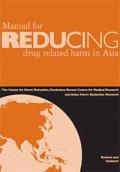
Resource | Publications,
Of all the epidemics of HIV (the ‘AIDS virus’) among the different groups in the community whose behaviours put them at risk, none is more rapid or devastating than epidemics among people who inject drugs. But at the same time, nowhere in the field of AIDS prevention are there such dazzling success stories than with prevention of HIV among injecting drug users.
This Manual grew out of the combined efforts of many people battling in Asia to stop HIV. It contains the accumulated experience of over decade of attempts to change policy and implement programs to stop this devastating scourge, collected over several years from many countries in Asia.
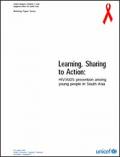
Resource | Publications,
Two decades of fighting the HIV/AIDS epidemic have shown that complacency is a deadly mistake, and dedicated actions against HIV/AIDS yield positive results. Countries such as Brazil, Cambodia, Thailand and Senegal have provided the world with enough evidence that it is indeed possible to reduce HIV infection rates. Success stories come from countries with both low and high HIV prevalence. We have also learned that young people and people living with AIDS are the most powerful, still untapped resources, for fighting the HIV/AIDS epidemic.
This Publication is a compilation of twenty six programme interventions, including eight in-depth case studies. It is designed to serve as a resource for policy makers, programmers, advocates, community organisations, UNICEF staff and partners.
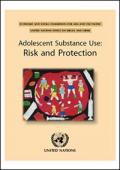
Resource | Publications,
Economic and Social Commission for Asia and the Pacific (ESCAP) emphasizes an integrated approach to substance use – prevention, treatment and rehabilitation – and works with diverse partners to build the capacity of youth and health workers to deal more effectively with substance use.
Adolescent Substance Use: Risk and Protection responds to young people's call for action against substance use. This publication provides an insight into planning and delivering effective treatment and rehabilitation programmes for adolescent substance users – in the Greater Mekong Subregion and beyond. It is intended to serve as a reference source for policy and programme personnel concerned with youth, health and social services in the ESCAP region.
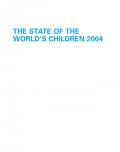
Resource | Publications,
Universal education might seem a relatively straightforward goal but it has proven as difficult as any to achieve. Decades after commitments and reaffirmations of those commitments have been made to ensure a quality education for every child, some 121 million children are still denied this right. Despite thousands of successful projects in countries around the globe, gender parity in education – in access to school, successful achievement and completion – is as elusive as ever and girls continue to systematically lose out on the benefits that an education affords.





